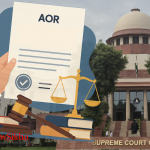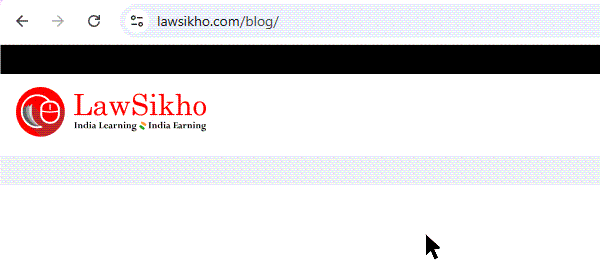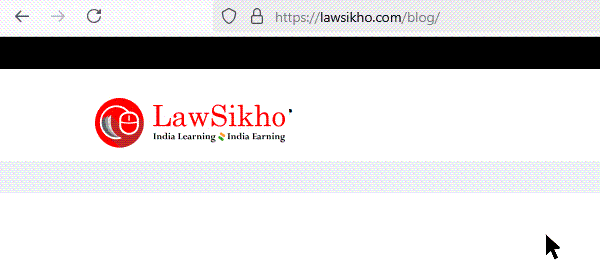Learn how to use AI tools like ChatGPT to draft legally compliant board meeting documents—including notices, resolutions, and minutes—under the Companies Act, 2013. This practical guide shows how lawyers can cut drafting time from hours to minutes while maintaining full SS-1 compliance.
Table of Contents
How AI is transforming board documentation
The knock on Rajesh’s cabin door came at 9:30 AM on a Wednesday.
Priya, one of the junior associates, peeked in with that look—part excitement, part relief.
“Sir, you got a minute? It is about yesterday’s Zenith Industries work.”
Rajesh looked up from his morning coffee, curious.
“The board meeting documents related to the rights issue of Zenith Industries? What about it?”
She settled into the chair across his desk.
“Well, you remember you gave me that assignment at 5 PM yesterday? The entire board documentation—notice, resolution, minutes—everything for their rights issue?”
He nodded, suddenly remembering.
“Oh yes, and you sent me the drafts by 6:30. I was honestly surprised. Usually takes our team half a day for that kind of work.” He leaned back.
“How did you manage to turn it around so quickly? And leave the office by 7?”
Priya grinned. “That is what I wanted to tell you about. I used ChatGPT.”
Rajesh’s eyebrows shot up. “ChatGPT? For legal drafting?”
“Before you panic—I did not just copy-paste! I gave it proper prompts, made sure everything followed SS-1, and cross-checked compliance. But sir, it actually knew about section 62, included the right references, and formatted everything correctly. What would have taken me 4-5 hours took just 90 minutes.”
She opened her laptop.
“The best part? The AI actually understood the structure requirements under Secretarial Standards. Want to see exactly how I did it?”
Rajesh leaned forward, intrigued.
If AI could genuinely help with routine compliance work without compromising quality, it could be a game-changer for their practice. Especially with the kind of tight deadlines clients expect these days.
“Show me how you do it,” he said.
What followed was an eye-opening demonstration of how the next generation of lawyers was already working smarter, not harder.
First, feed AI correct company information before drafting
“Here is the thing most people get wrong,” Priya said, opening a fresh ChatGPT window.
“They jump straight into asking for documents without giving the AI any context about the company.”
She started typing:
“I am working on board documentation for Zenith Industries Private Limited. Company details: 3 directors (2 based in Mumbai, 1 in Singapore), registered office in Delhi, manufacturing business, paid-up capital Rs. 5 crores. They frequently do rights issues for expansion funding. Mr. Gupta is Chairman and holds 60% equity, other two directors hold 20% each.”
The ChatGPT responded almost instantly: “Got it. Let me know what board documents you need—resolutions, notices, minutes, explanatory statements, or anything else. I can tailor them based on Zenith’s structure and recurring rights issues.”
“See that?” Priya pointed to the screen.
“It has already absorbed all the company specifics. Now, when I ask for any document, it knows the shareholding pattern, the director locations, everything.”
“Clever,” Rajesh nodded. “So it builds on this context?”
“Exactly. Watch what happens next.”
Drafting the board meeting notice using AI
“Now I ask for the actual notice,” Priya continued, typing her next prompt:
“Draft a notice for board meeting of Zenith Industries Private Limited under Companies Act, 2013. Meeting on 15th January 2025, 3:00 PM, hybrid (physical at registered office + video conference). Agenda: approval of rights issue of 50,000 equity shares. Ensure compliance with Secretarial Standard SS-1, include references to section 173 and Companies (Meetings of Board) Rules, 2014.“
The output was impressive. ChatGPT generated a properly formatted notice with:
- Correct the company header with registered office details
- Proper agenda formatting with numbered items
- Specific references to section 173 and the Meetings Rules
- Video conferencing compliance under Rule 3
- Even a note about 48-hour advance confirmation for virtual attendance
“Look at this,” Priya scrolled through the response.
“It automatically included ‘Notice is hereby given’, proper legal language, and even suggested sharing the video link separately for the Singapore director.”
Rajesh scanned the output.
Professional formatting, correct compliance references, and comprehensive agenda structure. “This is quite detailed. Did you have to teach it this format?”
“Not really. The AI seems to know SS-1 requirements. But I learned to be very specific about what I want—meeting type, exact agenda, compliance standards. Generic prompts get you generic results.”
“What about the resolution itself?”
Using AI to draft the board resolution
“That is where it gets really impressive,” Priya said, switching tabs.
“The resolution requires much more legal precision.”
She showed him her prompt:
“Draft a board resolution under Companies Act, 2013 for Zenith Industries Pvt Ltd approving rights issue of 50,000 equity shares at Rs. 10 per share. Format as per SS-1, include ‘RESOLVED THAT’ structure, reference section 62(1)(a), and add authorisation clauses for MCA filings.”
ChatGPT’s response was comprehensive and included:
- Proper “RESOLVED THAT” structure with section 62(1)(a) reference
- Multiple “RESOLVED FURTHER THAT” clauses covering authorisation
- Specific mention of Form MGT-14 and Form PAS-3 filings
- Authorisation for directors to fix record dates and dispatch offer letters
- Professional certification format at the end
“This is remarkable,” Rajesh read through the resolution. “It know the exact forms required for rights issue filings?”
“Yes! And look—it even included authorisation for ‘all such acts, deeds, matters and things as may be necessary.’ That is the standard legal language we always use.”
“The structure looks legally sound. What about the minutes?”
Prompting AI for comprehensive board minutes
“Minutes were my biggest worry initially,” Priya admitted.
“But the AI actually excelled here.”
Her prompt was detailed:
“Draft minutes of board meeting held on 15th January 2025 of Zenith Industries Pvt Ltd. Directors present: Mr. Gupta (Chairman), Ms. Sharma, Mr. Patel via video. Meeting held at registered office Delhi with video conferencing. Agenda: approval of rights issue. Resolution passed unanimously approving issuance of 50,000 equity shares at Rs. 10 per share. Include attendance, quorum confirmation, discussions summary, and voting details. Follow SS-1 format.”
The generated minutes were structured perfectly:
- Proper heading with meeting details
- Attendance table showing physical vs. virtual participation
- Quorum confirmation under section 174
- Detailed agenda discussion
- Complete resolution text embedded within minutes
- Unanimous voting record
- Professional certification and signature blocks
“Look at this attention to detail,” Priya pointed to the attendance table.
“It shows Mr. Patel attending from Singapore via video conferencing. And here—it included the standard disclosure of interest under section 184.”
Rajesh was genuinely impressed.
Prompts for drafting 8 common corporate actions
“This all sounds great for rights issues,” Rajesh said, “but what about other corporate actions? Can you use the same approach?”
“Absolutely! Once I cracked the formula, I built an entire library of prompts for different situations.” Priya opened another folder on her desktop. “Let me show you what I have tested so far.”
She displayed her organised collection:
Appointment of director: “Draft board resolution and minutes for appointing Mr. Arjun Singh as Additional Director of Zenith Industries. Include DIN 08765432, qualification as CA with 15 years audit experience, sitting fees of Rs. 30,000 per meeting, and references to section 161. Note that appointment is subject to regularisation at next AGM.”
Conversion of company: “Draft board resolution for converting Zenith Industries from Private Limited to Public Limited company. Include references to section 18, changes to MOA/AOA required, member approval requirements, and sequence of regulatory approvals needed.”
Increase in authorised capital: “Create board resolution under sections 61 & 64 for increasing authorised capital of Zenith Industries from Rs. 5 crores to Rs. 15 crores. Include justification for increase due to expansion plans, member special resolution requirement, and Form SH-7 filing authorisation.”
Change in registered office: “Draft board resolution for shifting registered office of Zenith Industries from the current Delhi address to new premises within the same city. Include section 12 compliance, Form INC-22 filing requirements, and intimation to statutory authorities.”
ESOP Implementation: “Draft board resolution for implementing Employee Stock Option Plan under section 62(1)(b). Include SEBI ESOP Guidelines compliance, exercise price methodology, vesting schedule, and member approval through postal ballot.”
Buy-back of Shares: “Create board resolution for buy-back of 10,000 equity shares at Rs. 15 per share under section 68. Include solvency declaration requirement, Form SH-8 filing, regulatory approvals from ROC, and member special resolution authorisation.”
Related Party Transaction: “Draft board resolution for approving material related party transaction with ABC Enterprises (sister concern) for purchase of raw materials worth Rs. 50 lakhs annually. Include section 188 compliance, audit committee pre-approval, and quarterly compliance reporting.”
“Wait,” Rajesh interrupted, studying the list.
“These cover most routine corporate actions we handle. Have you actually tested all of these?”
“Most of them, yes. The buy-back resolution was particularly impressive—the AI knew about the solvency declaration under Section 68, included Form SH-8 references, and even suggested the sequence: board approval, member resolution, then regulatory filing.”
“What about the ESOP one?”
“That was complex, but it handled it well. Referenced both Companies Act section 62(1)(b) and SEBI ESOP Guidelines, included exercise price below market value clauses, and suggested postal ballot for member approval since it is a special business.”
Rajesh was scanning through her examples. “This is quite comprehensive. What is the success rate?”
“I would say 80% accuracy. The remaining 20% usually needs tweaking for client-specific requirements or recent regulatory changes. But the legal structure and compliance framework? Is good, but requires human review and judgment.”
AI limitations in legal drafting: What lawyers still need to do
“This is quite something, Priya. But tell me honestly—what are the limitations?”
“Several important ones,” she said without hesitation.
“First, and most critical, human review is absolutely essential. ChatGPT makes mistakes, you still need to apply legal judgment before sending to the client for signing.”
She leaned forward. “For example, in yesterday’s rights issue resolution, the AI included all the right legal provisions, but I had to verify the share premium treatment, double-check the authorised capital limits, and ensure the pricing complied with our internal valuation guidelines. The ChatGPT gave me 70-80% of the work, but that final 30-20% of legal review is crucial.”
“What else?”
“Second major point—the same prompts can produce different results each time you use them. I discovered this when I ran the same director appointment prompt twice and got slightly different language structures. One version emphasised qualification details more, another focused on remuneration terms.”
Rajesh frowned. “That is concerning for consistency.”
“Not really, if you know how to handle it. The legal substance remains consistent—both versions had correct section 161 references, proper authorisation clauses. But the presentation varied. That is why I always review outputs and sometimes run prompts multiple times to pick the best version.”
She continued, “Third limitation—client-specific preferences. ChatGPT does not know that Mr. Gupta always wants conservative language in resolutions because of his banker’s requirements, or how they prefer certain authorisation hierarchies.”
“And fourth?“
“Current legal developments. It knows basic Companies Act provisions excellently, but it is not tracking the latest NCLT decisions or recent MCA notifications about the V3 filing. When that new Form DIR-3 KYC requirement came out last month, I had to manually add those compliance references.”
Rajesh nodded thoughtfully. “So it is a sophisticated first-draft generator, but professional oversight remains non-negotiable.”
“Exactly. Think of it as having a very well-read junior associate who has memorised the Companies Act but still needs senior review before anything goes out the door.”
Key limitations to remember: –
- Human review is essential – AI provides 70-80% quality drafts, but that final 20-30% of legal judgment and verification is crucial
- Output variability – Same prompts can produce different results, so always review and sometimes run prompts multiple times
- No client-specific knowledge – AI does not know individual client preferences, banking requirements, or internal authorisation structures
- Static legal knowledge – Not updated with the latest NCLT decisions, recent MCA notifications, or evolving compliance requirements like new Form DIR-3 KYC requirements
Practical tips for getting the best results
“Alright, I am convinced this has potential,” Rajesh said.
“If I wanted to start using this approach, what would you recommend?”
Priya’s eyes lit up. “I have learned some specific techniques that dramatically improve results.”
“First rule—be incredibly specific in your prompts:
- Do not say ‘draft a board resolution.’ Say ‘draft a board resolution under section 180(1)(a) for appointing Mr. X as Managing Director, include remuneration details, tenure of 3 years, and references to Schedule V compliance.’
- Include exact dates, amounts, section references, and desired compliance standards.”
“Second—use the progressive prompting technique:
- Start with the company context, like I showed you
- Then ask for specific documents
- If something’s missing, add follow-up prompts like ‘include authorisation for Form DIR-11 filing’ or ‘add clause for interested director recusal.'”
“Third—and this is game-changing—you can upload your own documents to teach the AI your firm’s style.”
Rajesh raised his eyebrows. “How so?”
“I uploaded three of our previous board resolutions—the ones you always praise for clean language and comprehensive clauses. Then I prompt: ‘Draft a rights issue resolution in the same style and format as the uploaded documents.’ The AI learns our firm’s preferred language patterns, authorisation structures, even our signature block format.”
She showed him a saved conversation.
“Look—after uploading our templates, the AI started using phrases like ‘subject to such terms and conditions as the Board may deem fit’ and ‘any other acts incidental thereto’—exactly the language we prefer.”
“Fourth—always ask for compliance checklists:
- After generating any resolution, I prompt: ‘List all regulatory filings, board approvals, and compliance steps required after passing this resolution.’
- It creates comprehensive to-do lists that ensure nothing gets missed.”
“Fifth—use iterative refinement:
- If the first output is 85% right, do not start over. Just say ‘revise the above resolution to include personal guarantee clauses’ or ‘add a clause about quarterly compliance reporting.’
- The AI builds on its previous work rather than starting fresh.”
“What about consistency across different documents?”
“That is where maintaining context becomes crucial. I keep the same ChatGPT conversation thread for an entire client project. So when I am drafting the AGM notice after the board resolution, it remembers all the previous decisions and maintains consistency.”
Conclusion: AI as a co-pilot, not a replacement
As Priya left his office, Rajesh sat back, processing what he had seen.
The AI outputs were not just competent—they were professionally structured, legally accurate, and surprisingly comprehensive.
The implications were significant.
Faster documentation meant happier clients and better margins on routine work. If junior associates could handle board meeting documents this efficiently, senior lawyers could focus on actual legal strategy and complex advisory matters.
But more importantly, he realised this was not about AI replacing lawyers. It was about lawyers who used AI tools effectively, outperforming those who did not.
The next generation was not just arriving—it was already here, working smarter and delivering better results in less time.
Later that day, Rajesh sent Priya a message: “Draft me a memo on your AI approach. Include your prompt templates and guidelines. I want to discuss this with the other partners next week.”
The future of legal practice was being written one smart prompt at a time.
Ready to explore more AI applications in corporate law?
Check out our detailed guides on [How to use AI to automate the legal conversion of a private company to a public company] and [How to use AI to build a due diligence checklist for converting preference shares to equity] for AI techniques that can transform your practice efficiency.
FREQUENTLY ASKED QUESTIONS
1. Can I use AI like ChatGPT to draft board meeting documents that are legally compliant in India?
Yes. AI tools like ChatGPT can help draft board notices, resolutions, and minutes that comply with Indian laws, including Section 173 and Secretarial Standard-1 (SS-1). However, all outputs must be reviewed by a qualified professional to ensure accuracy and company-specific customization.
2. What kinds of board meeting documents can AI generate?
AI can generate:
- Board meeting notices with agenda
- Resolutions (e.g., rights issues, director appointments, ESOPs)
- Minutes of board meetings
- Drafts for explanatory statements and compliance checklists
These documents can be customized by feeding the AI your company’s structure, dates, agenda items, and applicable sections of the Companies Act.
3. Is it safe to rely on AI-generated resolutions for MCA filings like MGT-14 and PAS-3?
AI can draft resolutions that reference the correct sections and forms, such as Section 62(1)(a), MGT-14, and PAS-3. However, professional verification is crucial. AI doesn’t track real-time MCA updates or firm-specific compliance policies, and cannot log into MCA V3 to file forms.
4. How accurate is AI when drafting board minutes and compliance summaries?
AI can produce highly structured, SS-1–aligned minutes with quorum details, attendance tables, and resolution summaries. In tests, it achieved 80–90% accuracy. The remaining 10–20% usually requires tweaking for real-world nuances—like pricing justifications or company-specific language.
5. What’s the best way to prompt AI for board document drafting?
Use progressive prompting:
- Start with company context (directors, shareholding, location)
- Be specific with your request (e.g., “Draft resolution under Section 62(1)(a)”)
- Ask for format compliance (e.g., “Follow SS-1 format”)
- Review and iterate with follow-up prompts like “Add MGT-14 authorization” or “Include pricing details”
You can even upload prior firm documents to help AI match your formatting and tone.






 Allow notifications
Allow notifications
